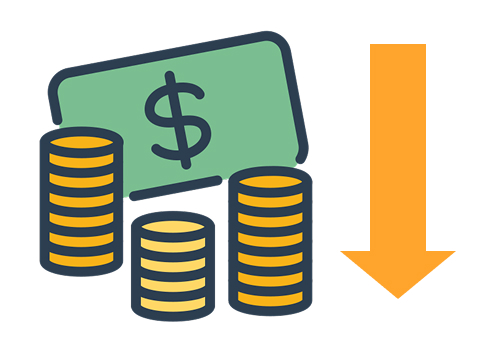Avoid the Tariff Trap: Strategic Benefits of Domestic 3D Printing
Camera Housing Mass-Produced via 3D Printing for End-Use
Rising import tariffs and trade war uncertainty are making manufacturing more expensive and unpredictable—but 3D printing offers a smart, strategic way to fight back. This digital manufacturing approach allows companies to reduce manufacturing costs, move production closer to home, and minimize reliance on overseas suppliers—a key concern in today’s tariff-heavy landscape.
Despite its potential, additive manufacturing remains underutilized in many sectors. Modern 3D printers now deliver strong, production-grade parts and tools—often in just a few days, without expensive tooling or delays.
By embracing 3D printing, businesses can stay agile, boost supply chain resilience, and adapt quickly to tariff changes or global trade shifts. If your company is feeling the impact of tariffs, now is the time to explore how additive manufacturing can help you reduce costs, increase flexibility, and reshore operations.
Benefits of 3D Printing

Local Production, Lower Costs
3D printing enables manufacturers to bypass tariffs by producing parts locally—no international shipping, no customs duties, and fewer delays. Compared to traditional methods, additive manufacturing shortens lead times and eliminates the need for expensive molds or tooling.
With access to robust thermoplastics and engineering-grade materials, manufacturers can print end-use parts like housings, brackets, or tooling that meet high-performance standards—all while reducing total cost of ownership.

Pivot Faster, Stay Ahead
In an environment of shifting tariffs and volatile markets, flexibility is crucial. 3D printing enables quick design changes, rapid prototyping, and on-demand production—helping manufacturers stay ahead of regulatory or market disruptions.
Engineers can iterate with functional printed parts, speeding up product development and validation. On the shop floor, custom jigs and fixtures can be printed in-house to streamline production, cut costs, and boost productivity—all without halting operations.

Reduce Inventory & Free Up Capital
Instead of stockpiling parts that might get stuck in customs or hit with unexpected tariffs, companies can switch to just-in-time manufacturing with 3D printing. This reduces warehousing costs, improves cash flow, and prevents supply bottlenecks caused by global sourcing disruptions.
Additive manufacturing is ideal for low-volume or replacement parts, allowing production to match demand. In a post-tariff economy, this flexibility helps businesses stay lean, adaptive, and competitive.

Make It Green: Cut Waste and Emissions
3D printing doesn’t just help your bottom line—it’s also better for the planet. Additive manufacturing uses only the material required, minimizing waste. And by producing parts locally, businesses avoid emissions-heavy overseas shipping.
Industries such as aerospace and automotive can also benefit from lightweight, fuel-efficient part designs made possible through 3D printing, further reducing environmental impact while enhancing performance.
Why Choose R&D Technologies?
At R&D Technologies, we go beyond sales. As a veteran-owned business serving U.S. manufacturers since 2000, we specialize in helping clients navigate supply chain disruptions, tariff challenges, and production roadblocks with trusted 3D printing solutions. We offer industry-leading service, technical expertise, and lifetime support for customers who purchase 3D printers directly from us. Many businesses come to us when their original seller disappears—but we’ve been here for 20+ years, and we’re not going anywhere.
Not Sure Where to Start? Get a Free Business Assessment Today!
Stratasys 3D printers are built for industrial performance, reliability, and ease of use. But are they right for you? Let us evaluate your production goals, costs, and supply chain needs. We’ll help determine if additive manufacturing can cut costs, support reshoring, and improve your manufacturing ROI—for free.





